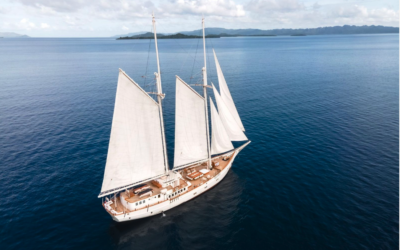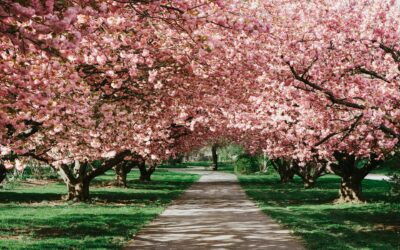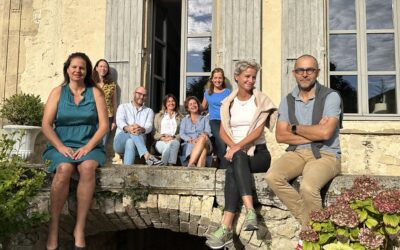Fanny returns from a voyage of discovery among the Papuans
Immerse yourselves in a unique experience, where time seems to stand still, as you journey to a destination that will evoke mixed feelings within you, at the far reaches of Indonesia.
Find out more about our upcoming, extraordinary cruise, an exclusive Looking For Charly product.
Why Papua?
I have been living in Indonesia for 10 years and yet the country never ceases to amaze me. When it is winter in Europe, the wet season is in full swing here, as is the case all over South-East Asia. However, in Indonesia, the largest archipelago in the world and a country that is dear to my heart, there is a region where the seasons are the other way round: West Papua, the Indonesian part of the island of New Guinea. It was there, to this far-flung place, that I decided to travel this year.
Heading due east, I initially gained altitude by setting off on foot into the mountains inhabited by the Papuan tribes; then, I boarded a magnificent Phinisi sailing yacht, and finally, I dived into the sea to explore the fascinating underwater world of the Raja Ampat national park.
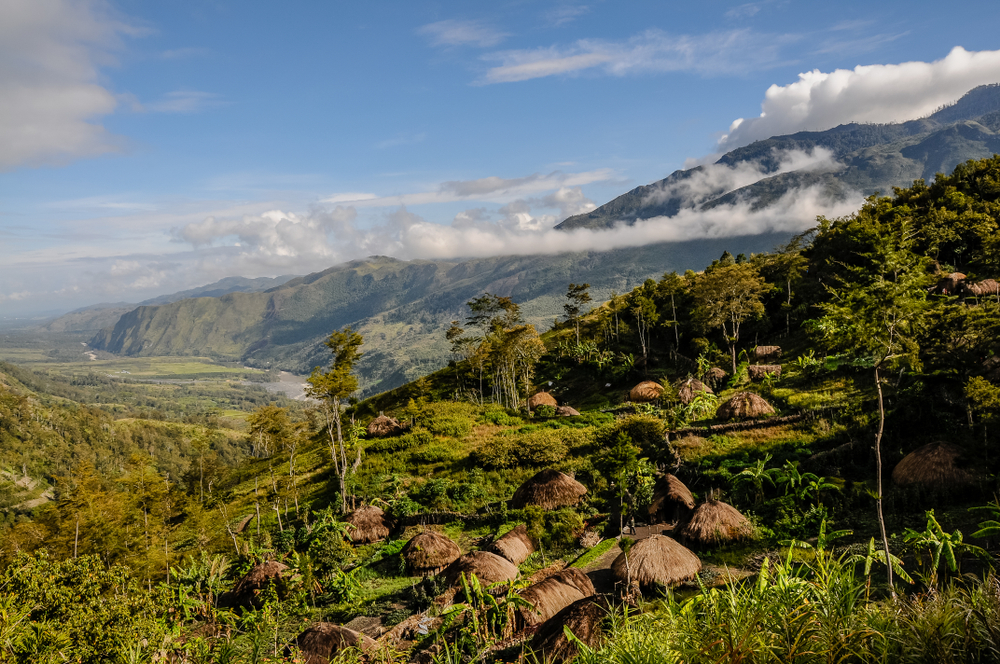
What was your itinerary?
The first stop on this 14-day journey was the Baliem Valley, in the centre of West Papua. To get there, we had to fly from Jakarta to Jayapura and then to Wamena, our final destination.
In the Baliem Valley, an area of outstanding natural beauty that is often described as a hidden paradise, nothing is like what you may have known or imagined about Indonesia. The scenery, just like the inhabitants, is radically different here from the rest of the country. This isolated valley has breath-taking landscapes characterised by majestic mountains and lush green gorges, sheltering a remarkable biodiversity of native plant and animal species. The tumultuous rivers that traverse the valley are essential to the survival of the local communities, which consist of various ethnic groups, including the Dani and Yali tribes. The native tribes continue to practice traditional ways of life, to preserve their ancestral customs. Their villages, built using traditional techniques, add to the picturesque beauty of these places.
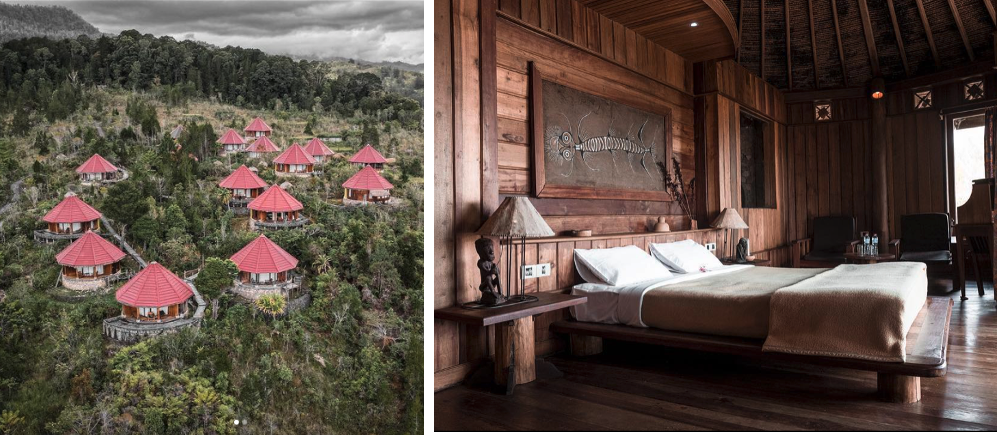
Where can you stay once you get there, at the world’s end?
To discover these lands in a comfortable way, in “Charly’s” style, I set up base camp at the Baliem Valley Resort. Travellers who wish to do so can enhance their stay by spending a few nights with the local tribes: a more basic but more immersive experience.
The resort was the brainchild of Dr Weiglein, a celebrated explorer and discoverer of Oceanic cultures. In 1997, he began construction of the resort, a pioneering tourist project in what was and still is the most isolated province of Indonesia. Following final approval, given by President Suharto himself, the resort was inaugurated at the end of 1999 and has since been a base for adventurers seeking to explore distant lands. Nowadays, the ecolodge is managed by his son, following in the footsteps of his explorer father by upholding the principle of having a minimal impact on the environment while offering optimal comfort to guests. The lodge is built from local, sustainable materials integrated harmoniously into the landscape and boasting spectacular, panoramic views. His management style focuses on environmental and social sustainability, through waste management, use of renewable energy sources, support of local communities and preservation of ancestral cultures. This makes perfect sense here and we were proud to support the lodge by staying there during our trip.
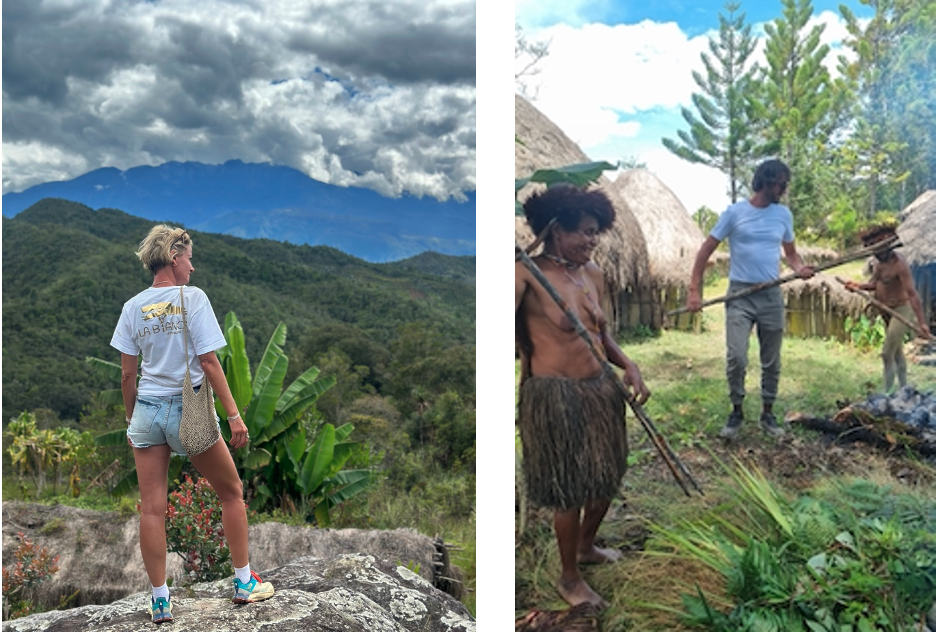
How long should you stay to make the most of the experience?
It is worth staying 3 to 5 nights, the time needed to experience true immersion into this untouched region. Accompanied by Papuan guides, the activities and excursions on offer showcase the natural and cultural richness of the valley. The programme includes meeting local Papuan communities, made up from different tribes, to understand their way of life based on agriculture, hunting and foraging; appreciating their culture and its rituals, chants, dances and animistic beliefs; hiking through the mountains, along the rivers, across landscapes of enchanting beauty; and visiting traditional villages, where the “honai” houses are made of bamboo and palm fronds. Their social systems are complex, based on lineages and clans. They assign a great deal of importance to traditional ceremonies such as harvest celebrations and funeral rites. All of this is truly impressive!
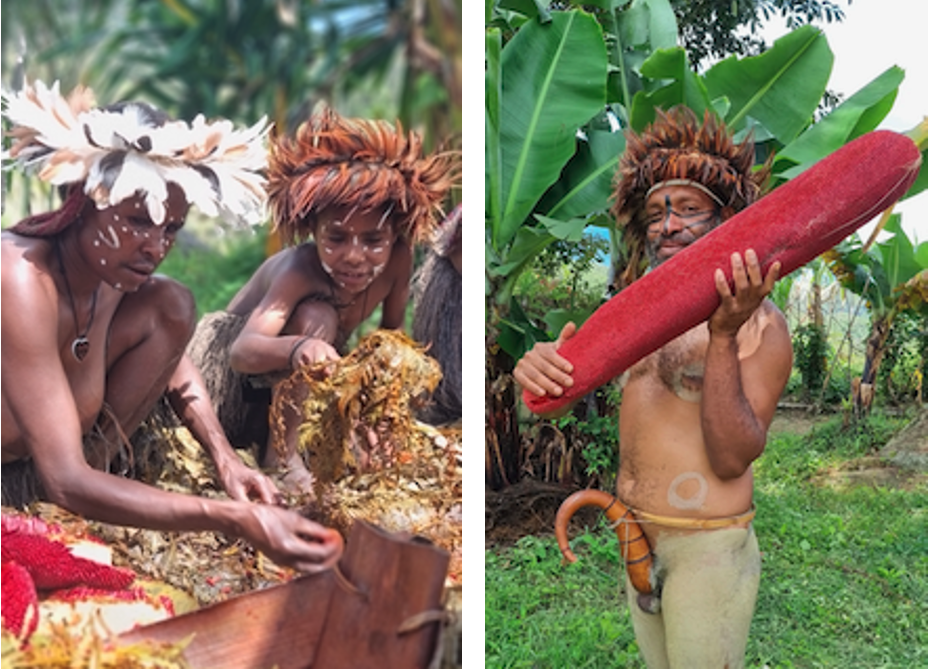
What about safety on site?
Papuans have a strong personality and meeting them can be daunting, but they are very welcoming and you will soon get used to shaking hands with many tribespeople during your stay. Supervision, openness to travellers and safety are managed perfectly by the resort’s staff and its owner. From time to time, tensions may arise between members of different tribes, but the local team is fully aware of what is going on – as the team itself is composed of tribespeople – and they immediately avoid these areas… The life of the tribes, their daily rituals and authentic ways are what makes this region so charming. For my part, throughout my stay, I never felt in any way unsafe. There were occasionally lingering looks due to my blond hair, but this almost always happens wherever dark hair is more common…
Although I was familiar with these tribes because of reading widely on the subject, going to the Baliem Valley gave me the rare opportunity to realise my dream as an explorer. It was an occasion to venture off the beaten track and meet remote communities, to find out about their ancient traditions and discover a world that has been preserved in time, which is both surprising and inspiring.
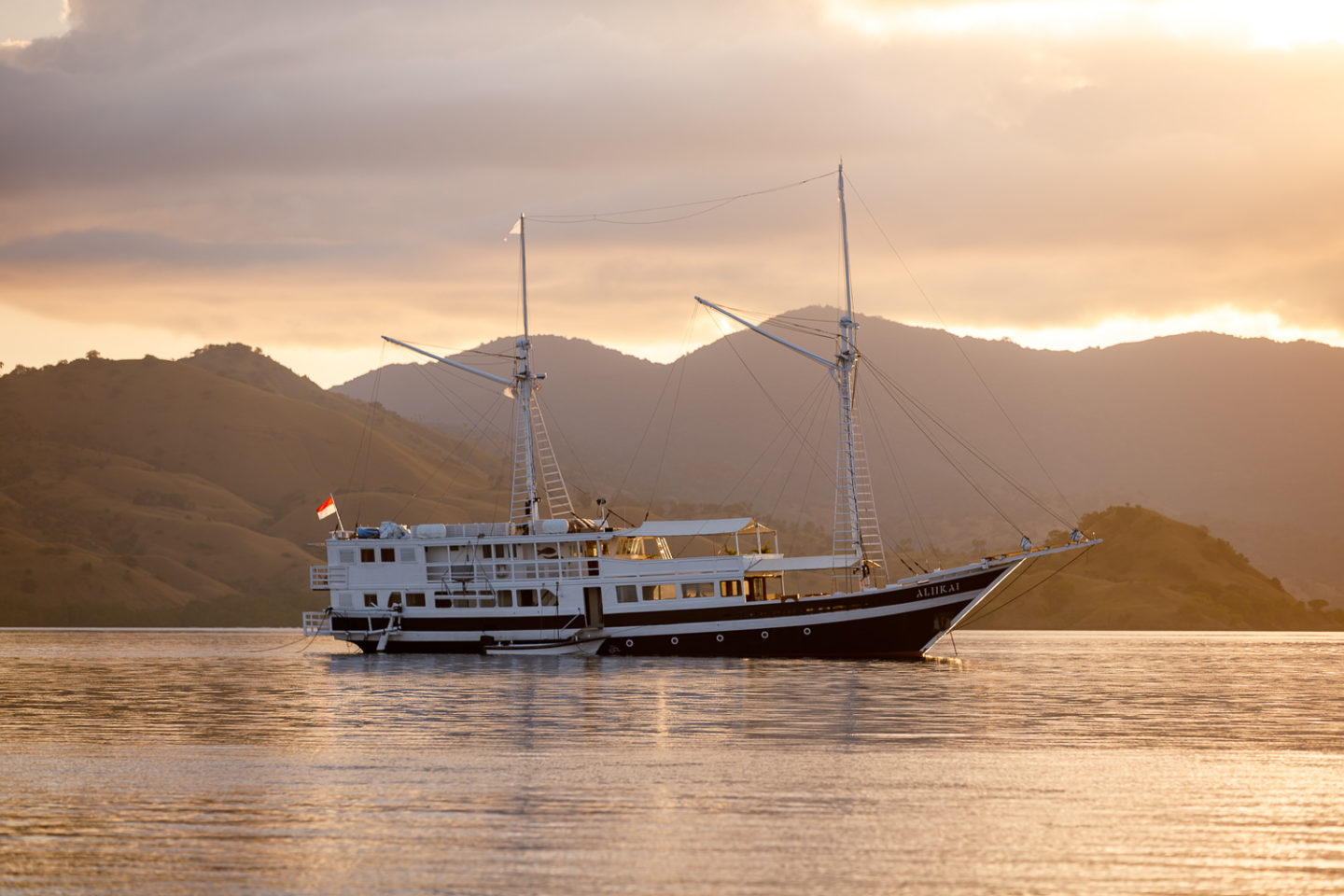
How did you explore the rest of the archipelago…
After 4 nights in the mountains, in a cool climate, it was time to return to the tropical heat and travel to Sorong, on the western tip of Papua, with a brief stopover in Jayapura. The city of Sorong is not particularly noteworthy, apart from being the home port for cruise vessels heading to Raja Ampat.
From there, I boarded a Phinisi, a magnificent traditional Indonesian sailing yacht that is emblematic of the archipelago. Built with the traditional expertise that is handed down from generation to generation, these yachts are often made from tropical wood, such as teak or ironwood, which confers on them an air of solidity and elegance.
So there I was, spending 9 nights on board the boat in the heart of Raja Ampat, a spectacular archipelago nestling within the Coral Triangle, a national marine and land park considered to be one of the richest and most biodiverse habitats in the world. The main attractions of the area are the coral reefs, islands and mangroves, but also the tropical forests and remarkable ecosystems on land. A destination that promised to deliver unforgettable experiences. For nature lovers, diving enthusiasts (scuba divers or snorkellers) and those who seek pristine, spectacular destinations, Raja Ampat truly is heavenly!

What level of luxury can be expected?
The comfort and high-quality services of a sailing yacht, paired with the sweetness and gentleness of the Indonesian crew and the pleasure of drifting from one location to the next, each more striking than the last, meant that this cruise was sure to be unforgettable. And, indeed, it was and will definitely remain one of the most memorable experiences among my many travels.

